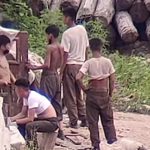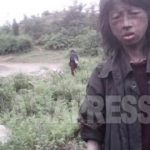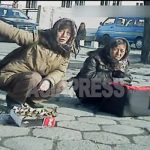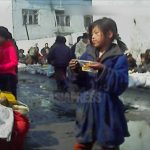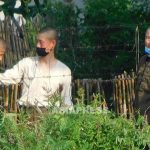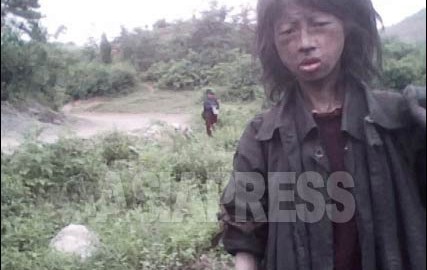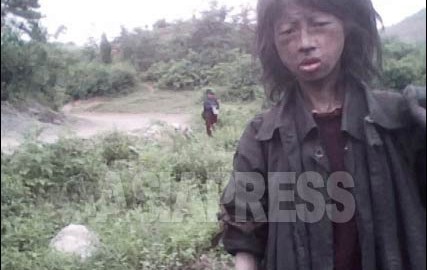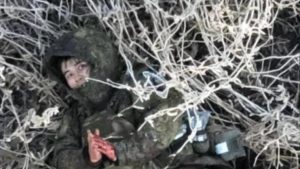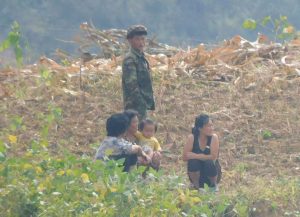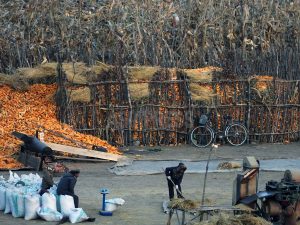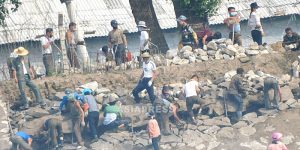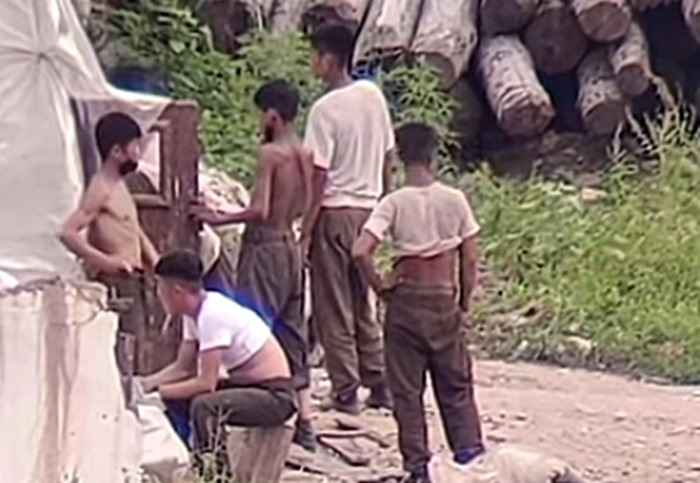
Late last year, Kim Jong-un's regime raised wages for workers and government officials more than tenfold from the beginning of the year. The goal was to force people to go to work and use the increased wages to buy food from the government
. The regime also began paying workers with cards instead of cash. But is this new policy sustainable? Many questions have been raised among North Koreans. (KANG Ji-won / ISHIMARU Jiro)
◆Rations and food from state-run stores not enough
The Hyesan Steel Factory is located in Hyesan, the capital of Yanggang Province. A reporting partner who investigated the "wage hike" and food rations in December 2023 told ASIAPRESS the following:
"In December, the Hyesan Steel Factory provided food for 10 days (8 kilograms) and raised wages to 50,000 won. With the new wage, I can buy about 10 kilograms of food (a mixture of white rice and corn) at state-run food stores, but it's still not enough to feed my family.
“A typical family of a husband, wife and three children needs 50-60 kilograms of food per month. In the past year, the local government-run grain stores have sold only about 7-10 days' worth of food per household. Even with the rations workers receive from their workplaces, it remains impossible to meet our needs with wages alone. Life is very difficult.”
※ The North Korean won is equal to about $0.1183.
◆Wages are paid with cards
At the Hyesan Steel Factory, workers were given wage payment cards along with the "wage increase.” With these cards, they can go to local grain stores and buy a certain amount of food. The reporting partner who conducted the survey described the situation at the end of December as follows:
"Not all factories and enterprises have started paying by card - some still pay in cash - but managers explained that in the future they plan to cover all food purchases by card. In the future, they plan to eliminate the use of cash, not just for food, but for all transactions."
It is unclear whether the cards can be used to make payments or withdrawals outside the state-run grain stores. This means that workers will not be able to spend their wages freely and will have to buy food from state-run shops. What will happen to the cash of people who are full-time housewives and earn money by working in the markets?
◆A lot of problems are on the horizon
In other words, the Kim Jong-un regime aims to: (1) centralize food distribution through a combination of rationing and monopolization; and (2) prevent people from engaging in private economic activities and ensure that they attend their assigned workplaces. Kim Jong-un's intention is to bring as many people as possible into the country's "organizational life" in order to strengthen collectivism. This is clearly part of the regime's broader anti-market policies.
But will Kim Jong-un's new policies work as intended? The biggest concern is that the amount of food rationed to those who go to work, along with the amounts sold at state-run food stores, will not be enough for the population to survive. There are also big questions about whether the regime can reliably continue to provide rations and food at state-run shops; in short, a key question is whether the state will be able to procure enough food to continue the new policy.
In North Korea, the "barley hump" - a period of lean food supplies - begins around March each year. By this time, the previous fall's harvest has already been consumed, leaving stocks low, people in rural areas hungry, and malnutrition rampant in the barracks due to the lack of food to feed the soldiers. This period repeats itself every year.
Presently, the regime faces the question of whether it can continue to pay the significantly increased wages. While the situation varies from company to company, many factories and businesses in North Korea are currently inoperable due to aging facilities and equipment and lack of raw materials and fuel. There are many reports of workers being sent to non-work related construction sites to make up for the lack of work.
The concept of "reigning over calories," in which a regime seeks to control and subjugate the population by centralizing food distribution, may not be sustainable in the North Korean case when viewed through the lens of economic rationality and profitability. The Kim Jong-un regime's new food management system will likely be tested in early spring, when the "barley hump" begins. (End of series)
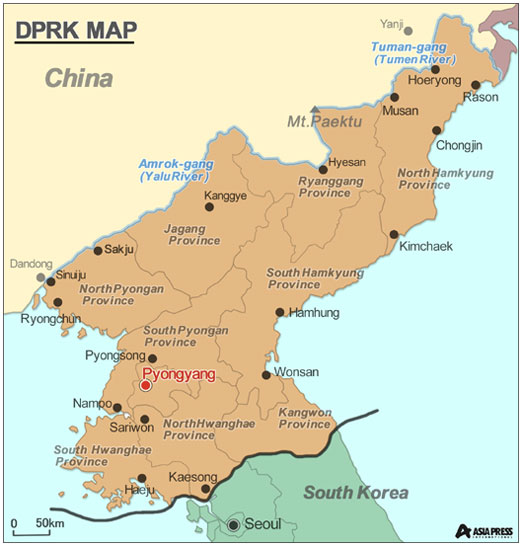
<Inside N. Korea> Government implements wage hike of more than 10 times (1) Wages increase for employees of state-run enterprises and government agencies
<Inside N. Korea> Government implements wage hike of more than 10 times (2) What are the intentions and goals of the KJU regime? People’s incomes have risen, but discontent is still deep…Wage hike part of the regime’s “rule over calories”
- <Interview> How was the public execution in Hyesan carried out?…In just four months, three executions have occurred in the city… “We were lined up at our places of work and marched to the execution site”
- <Investigation Inside N. Korea> How is the country’s fishing industry doing? (1) COVID and shrinking fishing grounds major problems…Kim regime’s restrictions on fishing lead some fishermen to financial collapse
- <Inside N. Korea>Speaking to a Border Guard (1) Landmine Burial at the Korea-China Border? “Even soldiers are afraid because they don’t know where they’re buried”
- <Inside N. Korea> A recent report on conditions at farms (1) The harvest is better than last year, but lack of materials remains a serious problem (4 recent photos)
- <Inside N. Korea>Unusual changes in the Army (1) In a rare move, police are tasked with cracking down on breaches of military discipline as crimes by soldiers and desertions increase
